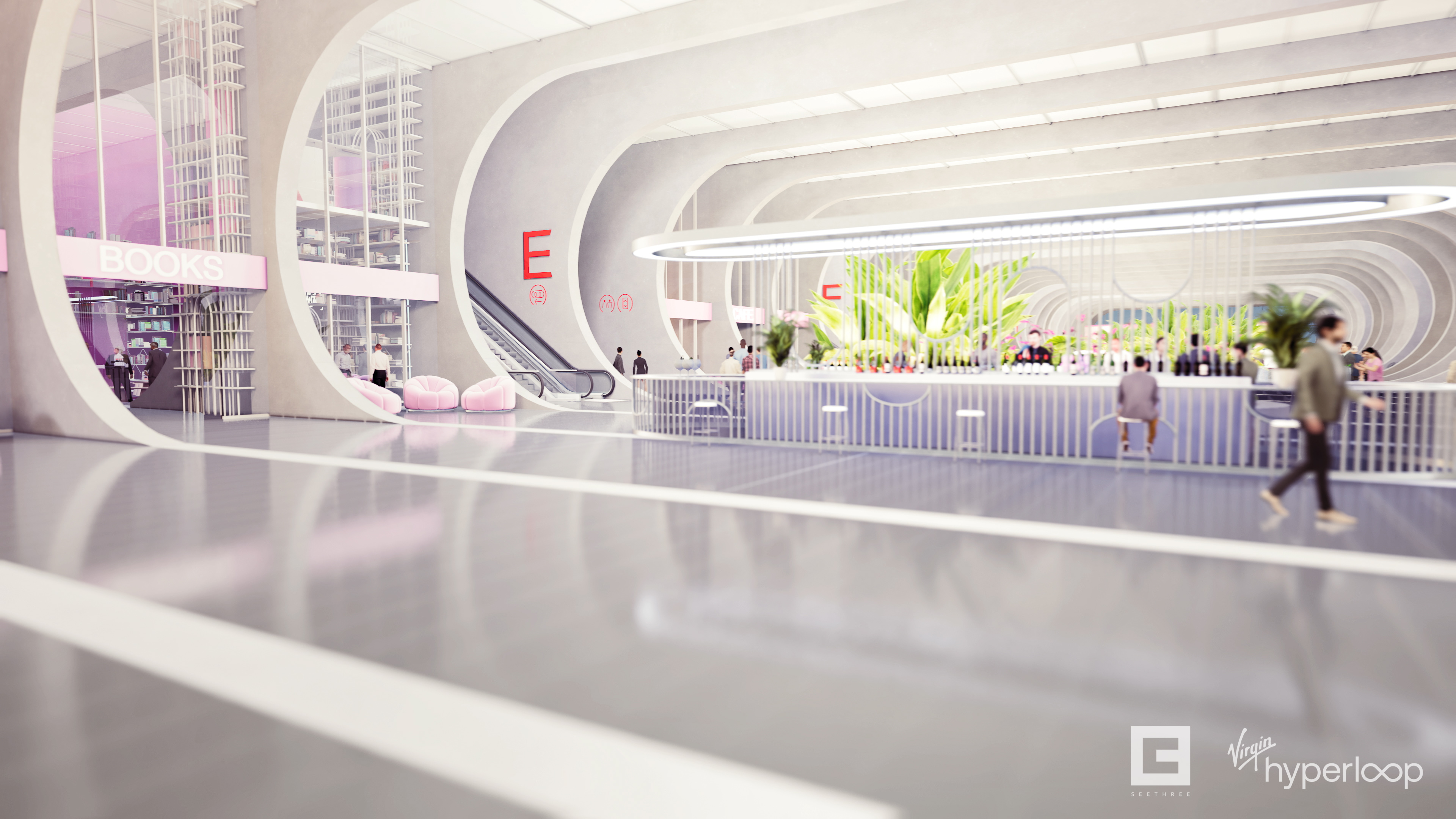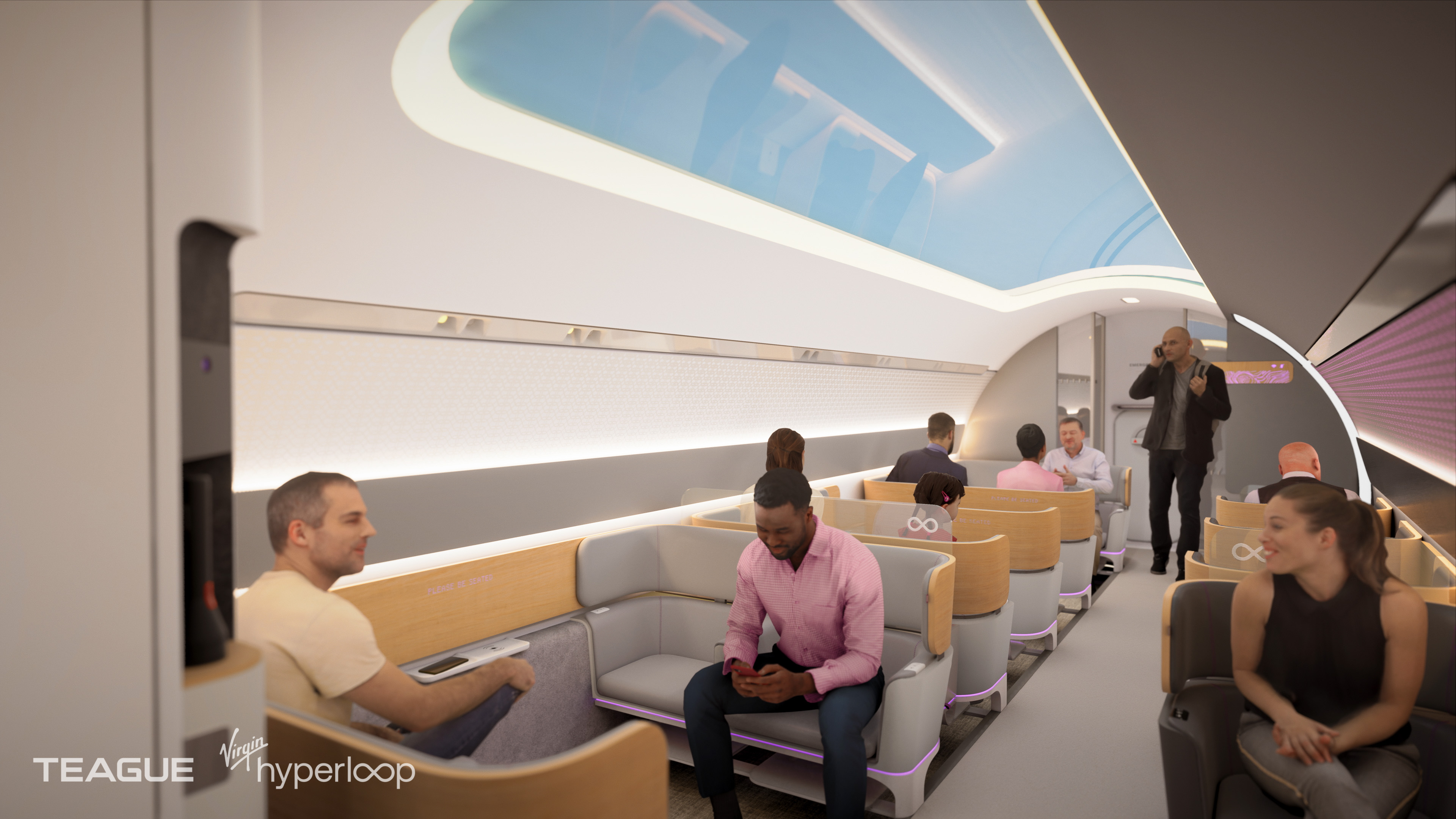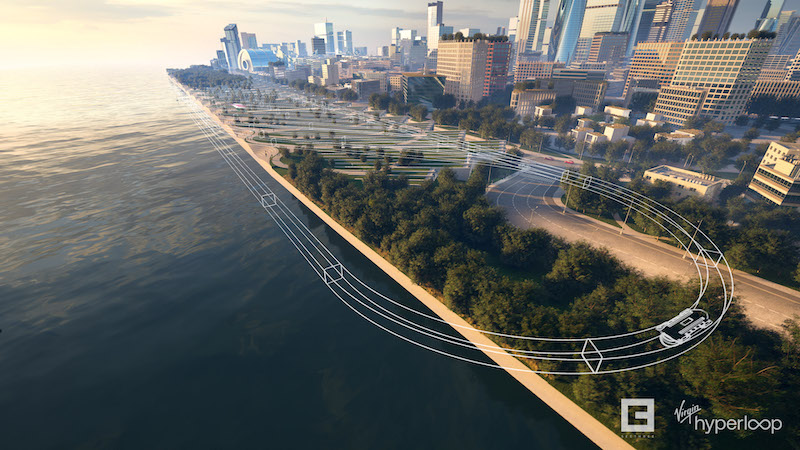Just a few months after Virgin Hyperloop completed its first passenger testing, the company has unveiled the design vision for its end-to-end passenger experience.
Virgin Hyperloop has released a new concept video (below) that takes viewers through the step-by-step process of a hyperloop journey, from arriving at the Bjarke Ingels Group-designed portals, to boarding the Teague-designed pods, to being transported to the destination portals.

“The new mode of travel at supersonic speed rethinks transportation and the perception of space, landscape, time, and distance,” said Bjarke Ingels, Founder & Creative Director, BIG-Bjarke Ingels Group, in a release. “In this day and age, Virgin Hyperloop taking off from our portals provides holistic, intelligent transportation for a globalized community to travel across vast distances in a safer, cleaner, easier, and faster way than airlines.”
The passenger experience is designed to be a multi-sensory experience that surpasses that of any other form of mass transit. It forgoes dark colors, stark lighting, and numerous screens for a more optimistic future that is greener, smoother, safer, and more pleasant for the passenger.

“Recessed seat wells provide a greater sense of space, while the raised aisle is a touch of the unexpected and unique. Bands of greenery and wood textures subvert the aesthetic of typical mass transit materials with something optimistic and fresh.” Said John Barrett, CEO & President of Teague, Virgin Hyperloop’s pod designer, in a release. “All lighting in the pod—including the unassuming information displays—are dynamic and adjust based on traveler activity and journey milestones."
See Also: BIG designs Hyperloop Certification Center for Virgin Hyperloop
Virgin Hyperloop aims to achieve safety certification by 2025, with commercial operations such as those depicted in the video, beginning in 2030.
Related Stories
| May 13, 2014
19 industry groups team to promote resilient planning and building materials
The industry associations, with more than 700,000 members generating almost $1 trillion in GDP, have issued a joint statement on resilience, pushing design and building solutions for disaster mitigation.
| May 11, 2014
Final call for entries: 2014 Giants 300 survey
BD+C's 2014 Giants 300 survey forms are due Wednesday, May 21. Survey results will be published in our July 2014 issue. The annual Giants 300 Report ranks the top AEC firms in commercial construction, by revenue.
| May 1, 2014
Super BIM: 7 award-winning BIM/VDC-driven projects
Thom Mayne's Perot Museum of Nature and Science and Anaheim's new intermodal center are among the 2014 AIA TAP BIM Award winners.
| Apr 29, 2014
USGBC launches real-time green building data dashboard
The online data visualization resource highlights green building data for each state and Washington, D.C.
Smart Buildings | Apr 28, 2014
Cities Alive: Arup report examines latest trends in urban green spaces
From vertical farming to glowing trees (yes, glowing trees), Arup engineers imagine the future of green infrastructure in cities across the world.
| Apr 9, 2014
Steel decks: 11 tips for their proper use | BD+C
Building Teams have been using steel decks with proven success for 75 years. Building Design+Construction consulted with technical experts from the Steel Deck Institute and the deck manufacturing industry for their advice on how best to use steel decking.
| Apr 2, 2014
8 tips for avoiding thermal bridges in window applications
Aligning thermal breaks and applying air barriers are among the top design and installation tricks recommended by building enclosure experts.
| Mar 26, 2014
Free transit for everyone! Then again, maybe not
An interesting experiment is taking place in Tallinn, the capital of Estonia, where, for the last year or so, its 430,000 residents have been able to ride the city’s transit lines practically for free. City officials hope to pump up ridership by 20%, cut carbon emissions, and give low-income Tallinnites greater access to job opportunities. But is it working?
| Mar 26, 2014
Callison launches sustainable design tool with 84 proven strategies
Hybrid ventilation, nighttime cooling, and fuel cell technology are among the dozens of sustainable design techniques profiled by Callison on its new website, Matrix.Callison.com.
| Mar 20, 2014
Common EIFS failures, and how to prevent them
Poor workmanship, impact damage, building movement, and incompatible or unsound substrate are among the major culprits of EIFS problems.

















